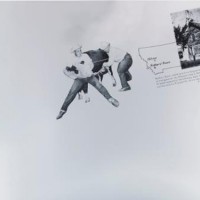-
Appeals Court Affirms Summary Judgment for Sothebys In Lawsuit Involving Artists Disclaimer of Authorship Under VARA
07/01/2013
 A recent appellate decision upheld Sotheby’s right to withdraw a work from auction based on contemporary artist Cady Noland’s disclaimer of authorship of a work under the Visual Artists Rights Act of 1990 (17 U.S.C. § 106A) (“VARA”). While the court resolved questions of Sotheby’s rights to withdraw the work under its standard-form consignment agreement, the court did not have the occasion to examine the contours of the artist’s disclaimer rights under VARA. In the meantime, though, VARA continues to be an effective weapon to be used by artists to protect their moral rights.
A recent appellate decision upheld Sotheby’s right to withdraw a work from auction based on contemporary artist Cady Noland’s disclaimer of authorship of a work under the Visual Artists Rights Act of 1990 (17 U.S.C. § 106A) (“VARA”). While the court resolved questions of Sotheby’s rights to withdraw the work under its standard-form consignment agreement, the court did not have the occasion to examine the contours of the artist’s disclaimer rights under VARA. In the meantime, though, VARA continues to be an effective weapon to be used by artists to protect their moral rights.
In the fall of 2011, Sotheby’s was preparing to auction a work by Noland on behalf of the work’s owner, New York art dealer Marc Jancou. The work had a sale estimate of between $260,000 and $350,000, but some were expecting an even higher price, given the excitement surrounding Noland’s works in recent years. Prior to the auction, however, Noland asserted that the work had been damaged, and demanded that Sotheby’s withdraw it from the upcoming sale. In doing so, she invoked her rights under VARA, which is intended to protect artists’ “moral rights” by protecting their “personal, non-economic interests in receiving attribution for [their] work, and in preserving the work in the form in which it was created.” Pollara v. Seymour, 344 F.3d 265, 269 (2d Cir. 2003). VARA permits an artist to “disclaim” authorship of a work by preventing the use of his or her name as its author in the event that the work is mutilated or otherwise modified in a way that would be prejudicial to the artist’s “honor or reputation.” 17 U.S.C. § 106A(a)(2).
Sotheby’s complied with Noland’s wishes and withdrew the work from auction. Jancou then sued both Sotheby’s and Noland for a total of $26 million, arguing that Noland had “tortiously interfered with the consignment agreement by persuading Sotheby’s to breach the agreement,” and bringing claims against Sotheby’s for breach of contract and breach of fiduciary duty. Sotheby’s moved for summary judgment to dismiss the claims against it, citing language in its standard consignment agreement (which Jancou signed) allowing Sotheby’s to withdraw the work at any time before sale if, “in its sole judgment,” “there is doubt as to [the work’s] authenticity or attribution.”
In a November 2012 decision, the state Supreme Court of New York County granted summary judgment in favor of Sotheby’s, dismissing Jancou’s claims and holding as a matter of law that Sotheby’s had complied with its contractual and fiduciary obligations to Jancou. The trial court’s decision did not address whether Noland’s disclaimer of authorship was valid under VARA; rather, it concluded that Sotheby’s was entitled under the consignment agreement to withdraw the work “[g]iven Noland’s assertion of her right under VARA.”
On June 27, the Appellate Division, First Department, affirmed the trial court’s decision—but offered little further guidance on when an artist’s disclaimer under VARA is valid. In a short opinion, the appeals court noted the language of the consignment agreement and Noland’s assertion that “her honor and reputation would be prejudiced if the artwork were offered for sale with her name associated with it in light of material and detrimental changes to the work that had occurred since its creation, in violation of her rights under [VARA].” The court concluded that, “in light of Noland’s assertion and a report showing that the work had been damaged and restoration had been performed on it,” Sotheby’s had not breached its contract or any fiduciary duty to Jancou in withdrawing the work.
Because the claims against Sotheby’s were governed by the terms of the contract, which gave Sotheby’s considerable discretion to determine whether, “in its sole judgment,” there was any doubt as to the work’s “attribution,” neither the lower court nor the appellate court felt the need to address head-on whether, and under what circumstances, Noland could disclaim her work. They did not, for example, examine any of the statutory exceptions to VARA (such as the provision that explains that modification of a work as “a result of the passage of time or the inherent nature of the materials” does not constitute “a distortion, mutilation, or other modification” that would give rise to a disclaimer). 17 U.S.C. § 106(A)(c). Nor did they examine what level of damage “would be prejudicial to [Noland’s] honor or reputation,” and did not explore whether that is an objective standard that must meet some cognizable threshold, or whether the decision is totally subjective in the view of the artist. Barring any further appeals, deeper exploration of the contours of artists’ disclaimer rights under VARA will have to wait for another day.
Art Law Blog
